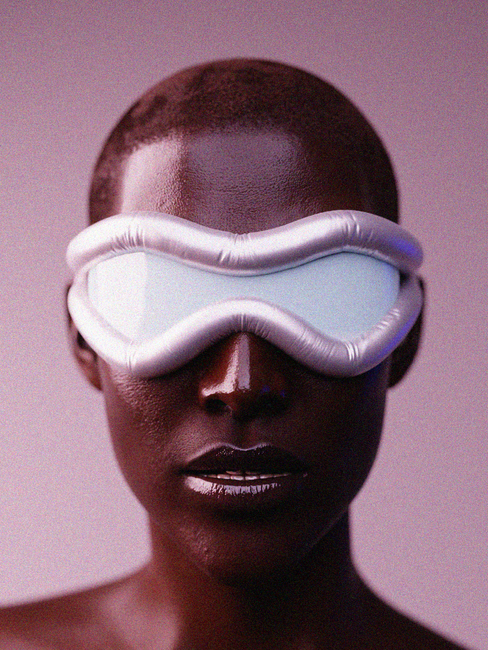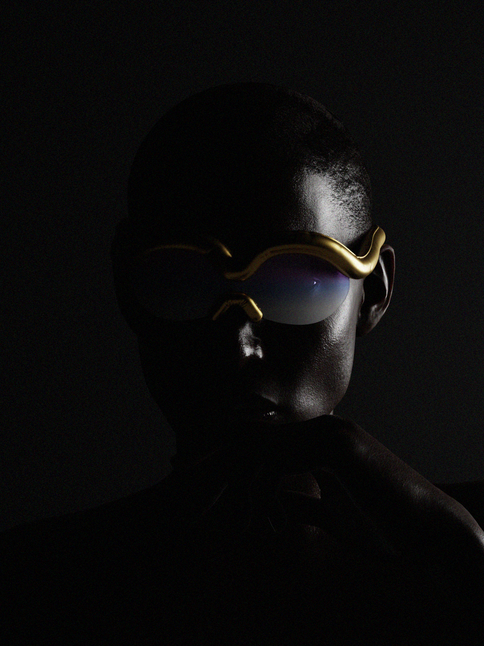DIALOGUE: Alexis Perron-Corriveau | Product Designer
- Onur Çoban

- Dec 7, 2023
- 5 min read

We talked with Alexis Perron-Corriveau, a product designer and furniture maker who is trying to explore a world where new technologies are in close proximity with craftsmanship to create timeless objects.
Who is Alexis Perron-Corriveau? Can you briefly tell us about yourself?

I’m a French-Canadian product designer and craftsman, with more than seven years of experience in craftsmanship and product design. I hold a diploma in fine woodworking from École d’Ébénisterie d’Art de Montréal (EEAM), a bachelor’s degree in product design and architecture from the University of Québec in Montréal (UQAM), and a master’s degree in design for luxury and craftsmanship from ECAL in Switzerland. I have worked with various international brands to create products that emphasize the value of craftsmanship in a digital and machine-driven world. I am also inspired by a critical view of contemporary society, which is drowned in consumerism, instantaneity and planned obsolescence. I believe that design can be a catalyst for change and offer solutions for a more sustainable and meaningful material culture. I’m currently focusing my practice in eyewear design for my newly founded company, Paloceras.
Can you tell us about your passion for combining traditional craftsmanship with digital technologies in furniture design? How do you achieve the balance between traditional and modern design?
This passion stems from a desire to explore a world where new technologies establish a rapport with manual work to create unique, timeless objects. I achieve a balance between traditional and modern design by using digital technologies as an extension of the craftsman’s hand; integrating its gesture into digital software to create new ways of doing. Creating a dialogue between human and machine, opening new avenues for creative expression.
“I believe that innovation can meet tradition, artistry intertwines with technology, and design becomes a powerful force driving transformation.”
Also, as the creator of Metahuman, what role do you play in developing eco-friendly fashion projects? How do you see this relationship between sustainability and technology?
As a creator of metahumans, I mainly use them to showcase products and environments. This allows me to test the fit and appearance of products without wasting any raw materials on mock-ups. By doing everything digitally and materializing only what is necessary, I can enhance the design research process and reduce the waste I would create by testing things in the physical world.
Metahuman creation can be a great asset in the fashion industry. It can help display garments and improve fit without producing anything physical, resulting in less waste. Content creation happens inside the machine, and real-life production becomes more selective. This approach not only saves time and resources but also enables more flexibility and creativity in the design process. I can experiment with different styles, colors, and materials without worrying about the environmental impact of using raw materials, leading to more sustainable fashion projects that are both innovative and timeless.
What are the challenging and exciting aspects of working with different materials in your work?
Working with different materials is a beautiful challenge and an exciting opportunity as a designer. It allows me to explore new possibilities, learn new skills, and create unique products. I have to understand how each material behaves, reacts, and interacts with other materials and forces. I also have to learn how to manipulate, shape, and transform each material using different techniques and tools. For example, when I work with wood, I have to consider its grain, texture, color, and type. I have to work with its natural attributes and shape it with care and precision. Working with acetate, a bio-based material derived from wood pulp, I have to deal with its flexibility, transparency, weight and durability.
With every new material I work with, I try to establish a dialogue with it; getting to know how it feels and reacts. I also try to create pairs of different materials, exploring how they complement or contrast each other.
For the past year, I’ve been exploring digital textures and their potential. They are simulations of tactile sensations using technology. They help create the illusion of touching, feeling, and manipulating different materials in the digital realm. Digital textures can enhance the user experience, the design, and the artistic expression by bridging the digital and the physical, especially in a world where the lines between online and offline worlds are blurred. These textures challenge the conventional boundaries of physicality, forging new visual expressions.

Which of your works has excited you the most regarding the design process and the final product?
I developed an exciting project for Paloceras where I created digital-only inflatable sunglasses. The PUFF collection was inspired by the inflatable fashion trend, and we decided to explore a type of accessory that rarely takes center stage in fashion events: sunglasses. After extensive exploration via 3D software, I discovered a way to inflate and digitally sculpt creases in the material to create an inflated-looking pair of sunglasses; blending digital techniques with hand sculpting. A total of six models were designed for the digital powerhouse Paloceras. These limited edition sunglasses feature a uniquely puffed-out aesthetic, meticulously crafted to envelop the wearer in a captivating veil of discovery. Digitally sculpted, these sunglasses are showcased through a series of specially designed Metahumans, merging meticulous craftsmanship with digital artistry to redefine the boundaries of fashion.
This collection also explored the concepts of digital scarcity, authenticity and ownership using blockchain technology. It enabled me to learn more about how blockchain can empower the digital art market by creating verifiable certificates of authenticity, transparent records of provenance, and new types of asset ownership. I anticipate this technology to be more common in the future in the fashion and luxury industry.
Can you tell us a little bit about the sources of inspiration behind your work? Who are the names you follow with curiosity in this field or different disciplines?
I draw inspiration from various sources, such as nature, digital art, fashion, streetwear and industrial products. Some of the names that I follow in this field or related disciplines are
In fashion, in no particular order, creators like Iris van Herpen, Shiaparelli, TOMBOGO, Jean-Paul Gaultier, Mona Thomas, photographer Ben Fourmi & Nicholas Fols.
In the eyewear industry, Jacques Marie-Mage, Gentle Monster, Kuboraum, Jimmy Fairly, Anne & Valentin, GIMM Eyewear.
In digital design, Refik Anadol, Six N. Five, David McLeod, RTFKT Studio, Tribute Brand.
Are you excited about the future, and what are your plans?
As a designer, I’m fascinated by the future and the new possibilities that technology brings. I want to keep working on projects that fuse digital innovation and artisanal craftsmanship, creating objects that offer alternative solutions and challenge material culture. These times give us so many opportunities; from AI to innovative materials linked with powerful digital tools to recreate our environments. They not only enhance my work as a designer, but offer new ways of thinking and designing.
My main focus now is the future of fashion tech, which I’m involved in by building Paloceras; a high-end design powerhouse with a digital DNA. Paloceras is a brand, a platform, a design house that guides people to a new era where communities, products, and narratives thrive at the intersection of increasingly blurred boundaries: digital vs. material, organic vs. generated, and imagination vs. reality.




















































